When does sight-seeing become botanising? Especially when you are showing visitors around your mountain?
Two trips over the last two weeks made me think of the link between birding and botanising as holiday pastimes. There are great advantages to botanising – a week later you know exactly where to find a specific plant. And plants don’t take flight when you try to photograph them. But like casual birding, there is much to look out for that is not on the tick-list…
The Broederstroom, one of the two rivers that flow through the valleys of our mountain, here twists its way through my cousin’s part of the farm. From a beautiful still pool the water folds over a rock ridge before frothing its way across a cascade. Some 80m higher in altitude and several kilometres away lies the Dap Naude Dam which you can see in the first photo. We don’t have many lakes – natural bodies of water – in South Africa and so this almost natural looking mountain ‘lake’ is a bit of a draw card in our area. The route to it I like to take leads to a look-out above Houtbosdorp. Here you’ll find one of the many divides in the local eco-systems. You stand on the edge of the mist-belt and look northwest across a harsh, dry valley to where on a clear day in the blue distance the Soutpansberg abruptly plunges into nothingness on its western-most edge, and you look northeast across the lowveld towards the Kruger Park. Unfortunately on both trips it was misty at this point, so no photos.
Then you enter the Woodbush, possibly the second biggest area containing mostly natural forests in South Africa. (The Tsitsikamma on the Garden Route along the southern coast is the biggest.) As you drop down into the valley of the Broederstroom, you find yourself for the first time in the indigenous forest. On the earth bank next to the road grow white streptocarpus, pink impatients, ferns and – in their season – clivias. On the downhill side mosses, ferns and even clivias grow on the contorted branches of forest trees.
Not long after, the view opens up to the sight of ‘Dap’, as it is affectionately known, in the first photo. But first, some botanising…
Streptocarpus wilmsii is, I think, the name of the streptocarpus which so richly covers the bank above. Below is Impatiens sylvicola which also grows wild in my garden.
Another view of a steep bank along the road, with a clump of clivia leaves shining at the top of the bank.
But now – let us drop down to ‘Dap’. Above the dam the river winds lazily.
And as we reach the river we are greeted by a view that is about as unAfrican as any on our mountain…
Yet under the oaks grow of our loveliest wild flowers: Freesia grandiflora – previously classified as first Lapeirousia g. and then Anomatheca g. To my untrained eye it does not look like a freesia, but I am pleased to find it classified with these most beautiful garden flowers.
Just across the road grows a very similar flower, but slightly fleshier and fond of growing near water. It is also found in white and pink, and I grow these in my garden… but I really must plant some of the red ones, which I have found wild on Sequoia, for they are the most beautiful.
They are known appropriately as Scarlet River Lilies and, confusingly, I have just discovered that their name has been changed from Schizostylis coccinea to Hesperantha c. Here they grow on either side of the Broederstroom just above the Dap Naude Dam.
Down we went on the first trip, past the dam wall and back along the river, where we saw bushpig (6 in total!) and many duikers (small buck). We also saw this clump of parasitic flowers growing in the pine forest – but try as I might I have had no luck in identifying them…
 |
 |
 |
 |
On the way home the last light shone through the pine trees, one of the sights that makes our most important crop on the mountain a thing of beauty.
The next trip saw us leaving ‘Dap’ by a different route, climbing instead up the opposite side of the valley and back into some mist, before dropping down the famous ‘Forest Drive’ – a dirt track recommended for 4x4s only, which leads down a steep pass from the mist belt to the Lowveld. Here we stopped to look back from about 2/3 way down.
It is a trip best done ON the roof (if there has to be one) and I remember my first trip down there in the early 60s on the roof carrier of my father’s 1959 Opel Caravan, but the photo I find in the family archives dates from 1955, with the self-same roof carrier on the Opel Olympia; today my cousin has an open buggy, and I still will do the trip in it! Modern cars, let alone modern ideas about safety, have put a stop to rooftop travel…
But I run ahead – before the photo below was taken, looking down on the lower reaches of the pass where some pine has recently been cut and where the road dips into valleys where the indigenous forest still grows, we stopped to admire many wild flowers.
Agapanthus inapertus, our most common local agapanthus, has diagnostic hanging bells and good colour. It is herbaceous and thus less valuable as a foliage plant than most agapanthus. Soon I must post on a huge stand of them nearby, as I think we are heading for an excellent year for aggies!
Just to make certain we are all on the same page -right now we are on often damp grassland. Huge fields of yellow helicrysum grow amongst the grasses, and in the foreground other flowers (Berkheya?) have already gone to seed. The tree ferns along a stream where possibly moved there when the Dap Naude Dam was built in the early 1960s.
The delicate flowers of Lobelia coronopifilia grow on a little straggler by the roadside, one of several wild lobelias. The beautiful blue flower below I have too poor a record of to identify. It might be an Aristea, which I remember seeing but not photographing…
Dissotis canescens is starting its long season – I blogged about it in my garden for Wildflower Wednesday last year. (in fact I think an advance link to Wildflower Wednesday of this post is in order! Or perhaps a backward link to December is easier: click here to find it!)
Gladiolus dalenii is another of the wild flowers I’ve posted on before. Here are more photos of this subtly coloured flower from this trip.
 |
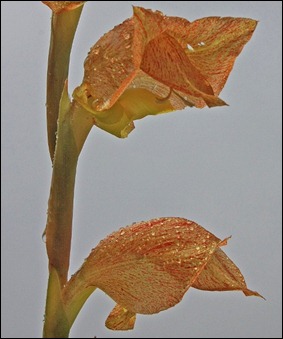 |
The fiery arrival of the crocosmias signals to me that summer has passed its midpoint, and sure enough: I saw my first Crocosmia paniculata – one of the parents of the famous ‘Lucifer’ – near Dap Naude Dam.
Growing by the side of the road we found a sheet of little yellow flowers I could not identify. I pored over my books for ages… and then had a brainwave: that starry boss belonged to one species only – Hypericum!
A search quickly revealed that there is a herbaceous species called H. lalandii and indeed, this was it. Tiny, slight, obviously ephemeral, I had not thought to associate this finger-nail sized flower with the robust H. revolutum that is one of our mainstays on the mountain! Here it is again in more detail.
Time for us to move on down the forest drive, to more ferns and flowers already recorded, and to a few new lovers of cool, damp shade… such as the various Plectranthus – just beginning to come into flower – and the Begonias. Here are two of them together: P. fruticosus and B. sonderiana.
B. sonderiana has a clearly recognisable begonia leaf, which is what first alerted me to the fact that we have wild begonias growing in our area – yet another garden plant I could call my own! B. sutherlandii must be one of the most delicate and beautifully coloured flowers in the whole world: a soft but distinctive orange which glows in the deep shade it prefers.
Ever down we go…
Eventually we stop for something to drink at a beautiful waterfall.
Next to which a forest path ascends…
Eventually we stop in at Debengeni, about which you can learn more here. These fascinating falls – more of a vast cascade than a waterfall – are a favoured picnic spot and can be reached from the R71 at the bottom of Magoebaskloof, from where it is only a few kilometres on easy gravel. If you intend including the Forest Drive in a visit, it is much better to start from the Houtbosdorp road at the top of Magoebaskloof and to do the Drive downhill ending at Debengeni!
Beyond the trees the first part of the falls cascade into a huge icy mountain pool, ideal for a bracing swim, before making its way in a leisurely way across sheets of rock – which then dip down into a vast and dangerous slope pock-marked with huge maelstrom craters – this last photo doesn’t begin to give the full impression of the ground between the observation deck and the quiet area under the trees way below…
There; remember you are looking down at this, not up! And, continuer, time now after all of this to return home! Round trip: possibly 30km.
PS: I had forgotten that the Forest Drive featured in a previous post – here is a link to it!







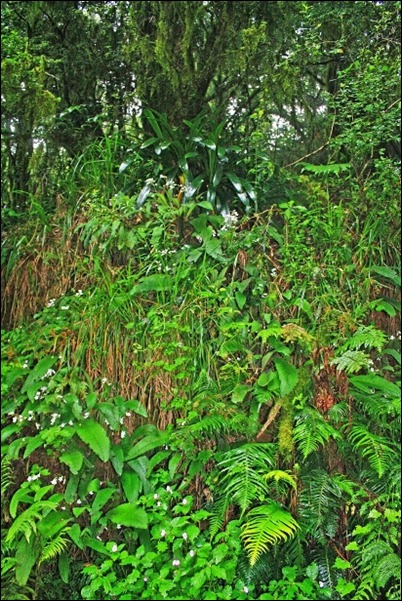









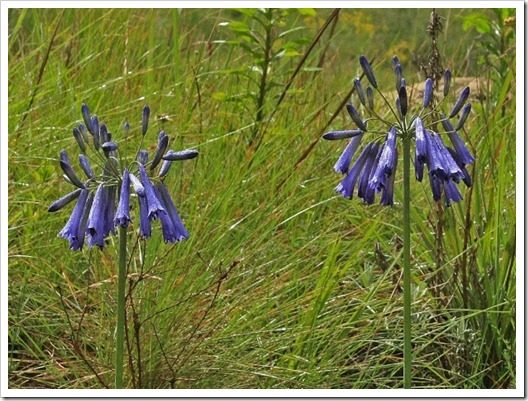
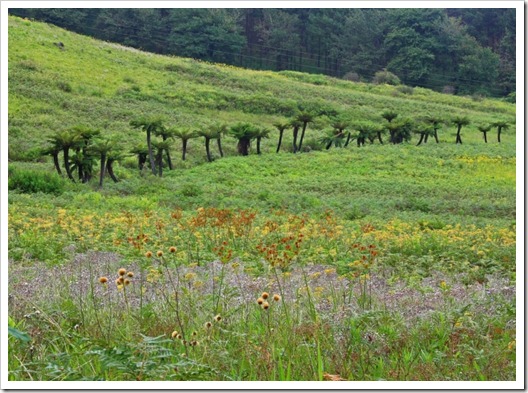





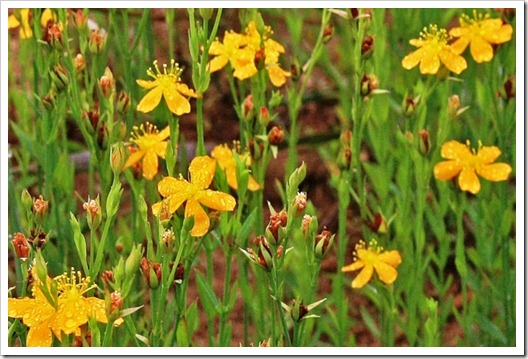







Some very enticing volunteers for your garden on this walk. My inapertus has skulked off, will have to try again – perhaps in a shady pot to distract it from the HOT!
I’d think your biggest problem is winter rot whilst the plant is dorment – perhaps your shady pot should also be a dry pot in winter!
What a great tour, Jack. I was fascinated by the combination of scenes that seemed so familiar (the stand of pine trees; Maine’s nickname in the United States is the “pine tree state”) and those that were thrillingly exotic (wild agapanthus!). I hope that 2012 is off to a wonderful start for you.
Thank you, Jean – may it be a great year for you too!
Once again, wonderful pictures, Jack! I’m constantly amazed at how similar the landscapes and vegetation on your mountain looks to large parts of Vancouver island. The difference is in the vegetation – instead of large oaks, we have large maples, and, of course, the herbaceous wildflowers are of different varieties, but with a similar “look” to them. Even the ferns look similar! We DO live on a beautiful planet, don’t we? I just hope it still looks as lovely in 100 years!
Haha, Gord! Luckily we won’t be around in 100 years to see the change…
thanks for the guided tour, how great!
Thank you, Sprig!
Pingback: THE HAENERTSBURG GRASSLANDS « Sequoia Gardens Blog
Pingback: I DON’T WANT MUCH, I JUST WANT MORE « Sequoia Gardens Blog
‘SWALLOW FALLS’ dam is full! and pretty.
and how I remember that regimented row of tree ferns along a stream. Been there forever.
Thank you Jack